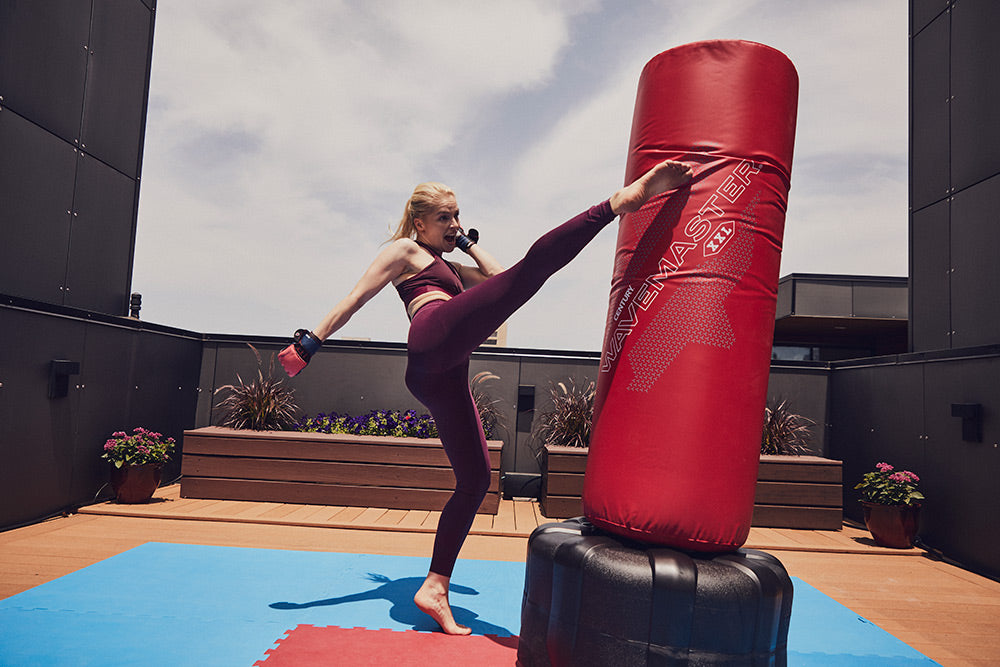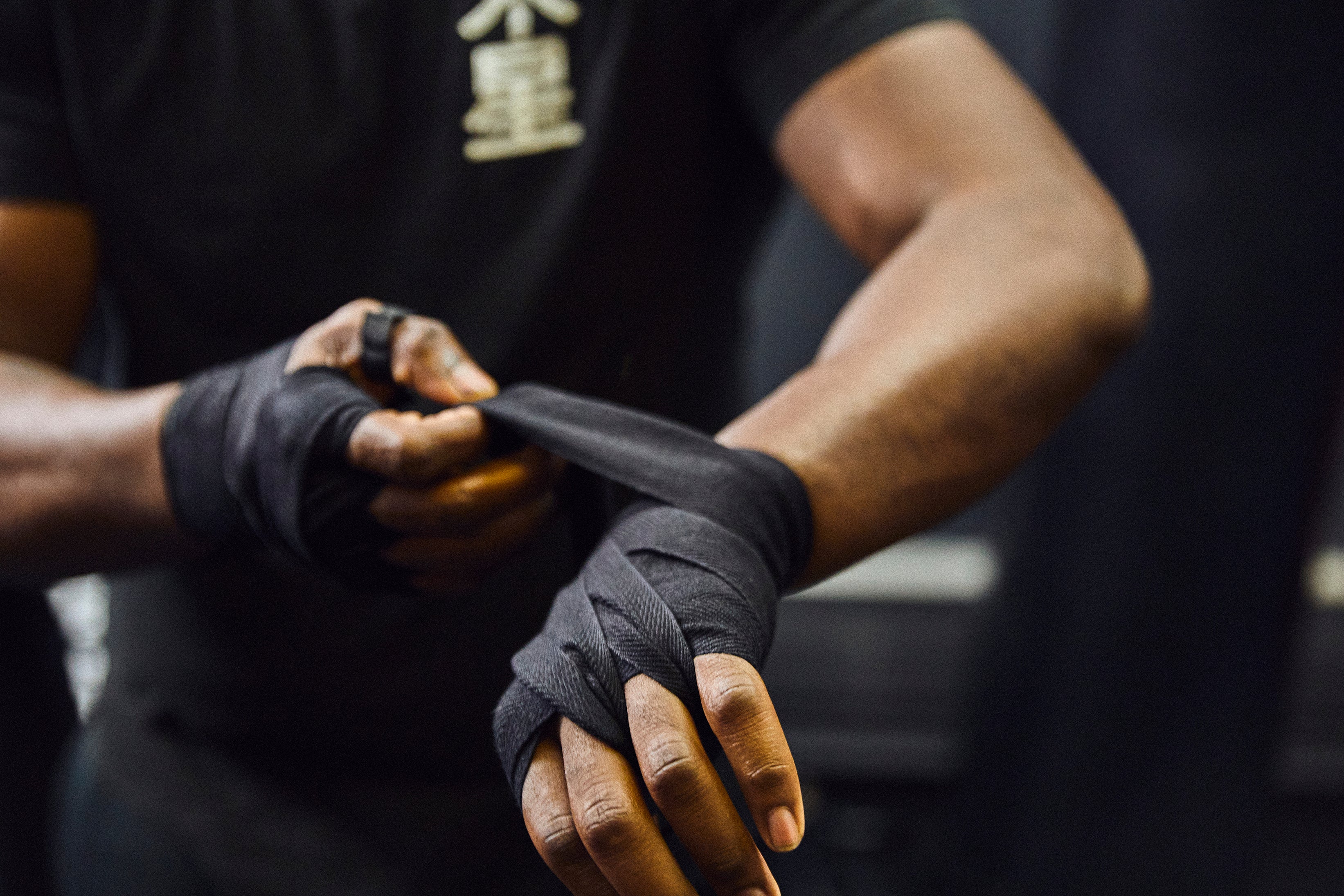HANGING BAG VS. FREE STANDING BAG: PROS & CONS

Which Bag Should I Invest In: Hanging or Freestanding?

If you’ve made it this far into your research, congratulations! You’re determining what kind of heavy bag you need to buy, which means you’ve already realized the tremendous health and fitness benefits that come with this kind of training: improved coordination… enhanced reflexes… fat burning and toning… you know all these and more.
All that’s left is to pick a bag. First, some great news! No matter what type of heavy bag you invest in, your workouts will still provide all of these benefits. Your workouts, their length, frequency and intensity, will affect your results far more than your bag.
So, does the type of bag even matter?
Yes, absolutely.
Any bag can be used for effective training, true – with two limiting factors in place. The first is your training style/experience level. The second is your training space. Before you pick a bag, you should be able to answer these questions:
- How long have I been training?
- What is the projected intensity of my training, now and in the next year?
- What am I training for? Fitness? To learn a martial arts style? To compete in a fighting sport?
- Can I keep this bag in one place, or will I need to store it somewhere when I’m not using it?
- Can I make semi-permanent changes to my living space?
- Where do I live in relation to others (in a shared residence, do you live above your neighbors? Below them? How much space is yours versus shared?)?
Once you know these answers, you can determine whether a hanging or freestanding bag is right for you!

Hanging Bag
This style of bag is more familiar to the untrained. These cylindrical heavy bags can be different lengths, weights, and diameters, but they all feature straps at the top used to attach them to a ceiling or other mounting system that allows them to hang down.
PROS
- Hanging bags swing when struck. This allows the user to work on timing and distance control. A strike at the far end of the bag’s oscillation will not have the same effect as a strike placed correctly, on the return trajectory towards the user.
- Most – although not all – hanging heavy bags are weighted with sand, creating a tougher striking area near the base. This area is ideal for kicking for those seeking to toughen up (calcify) their shins.
- Although the bag can swing, it will never move beyond a fixed point and range, determined by the point by which it is hung and the length of the rope or chain securing it. You will never have to “chase” after a bag.
CONS
- The same sand filling and overall harder feel of a hanging bag that is a benefit for some may be a detriment to new users, who are more likely to hurt their hands or wrists punching with imperfect form.
- A hanging bag takes sold-separately hardware to install, and requires drilling into a wall or ceiling to mount. Once it’s in place, although you can take the bag down, you will not be able to re-hang it anywhere else without more hardware and drilling. Alternatively, you can buy a hanging bag stand.
- Unless your bag is hanging from the center of your ceiling or very far out from your wall, or on a specialty stand like the Cornerman, you may not be able to work 360 degrees around it.

Freestanding Bags
More gyms, schools, and fitness centers have started using freestanding bags. They come in a variety of shapes, from cylinders similar to the traditional heavy bag to training dummies.
NOTE: This article is only intended to apply to freestanding heavy bags – those with a circular plastic base that can be sand or water filled. Other freestanding bags, such as the Versys line, are intended for specialty purposes and not general training.
PROS
- Freestanding bags are simple to set up. The longest part is filling the base (funneling sand in takes ~15 minutes); after that, the bag portion locks into the base and you’re ready to train. No drilling, hardware, or additional purchases (unless you buy sand) required.
- Relocating a freestanding bag is easy, despite a filled base weighing up to 270 lbs. All you have to do is tip the bag slightly at an angle and roll it along the rounded edges of the base. Removing the bag section from the base is also an option for storage.
- In order to be in the center of the room, a hanging bag would need a permanent fixture in the ceiling above it. A freestanding bag, however, can be rolled into the center of any room, used for training for an hour, and rolled away without affecting the space. This allows you to work your way all around the bag while training, or even train on opposite sides with a partner.
CONS
- The weight of a freestanding bag is concentrated in the base, while the bag section is foam with a plastic core. The striking surface of a freestanding bag is overall softer, and doesn’t offer the same feedback as a heavy hanging bag (this is less of a con if you aren’t training to condition your wrists and shins, however).
- Because of how it is anchored, a freestanding bag will rock rather than swing with struck with enough force. Putting down a pad or mat is recommended to reduce noise and annoyance to any downstairs neighbors.
- Some styles of freestanding bag screw onto the base. Striking from only one direction without practicing footwork or moving around the bag can gradually loosen the bag from the base, and you may occasionally need to take a 10-second break during training to tighten it.
The final choice is yours, but now you can make the best decision possible!
looking to outfit your home gym with custom Hanging or freestanding bags? Check out our customizable products here


